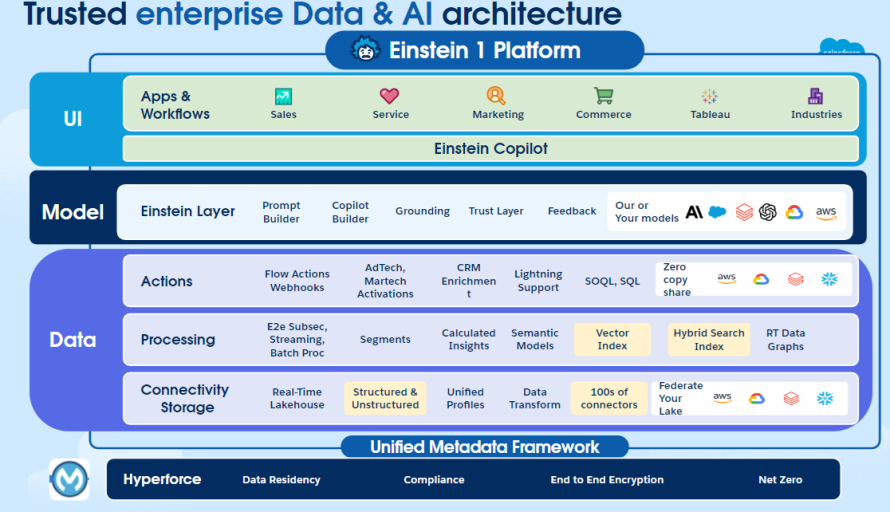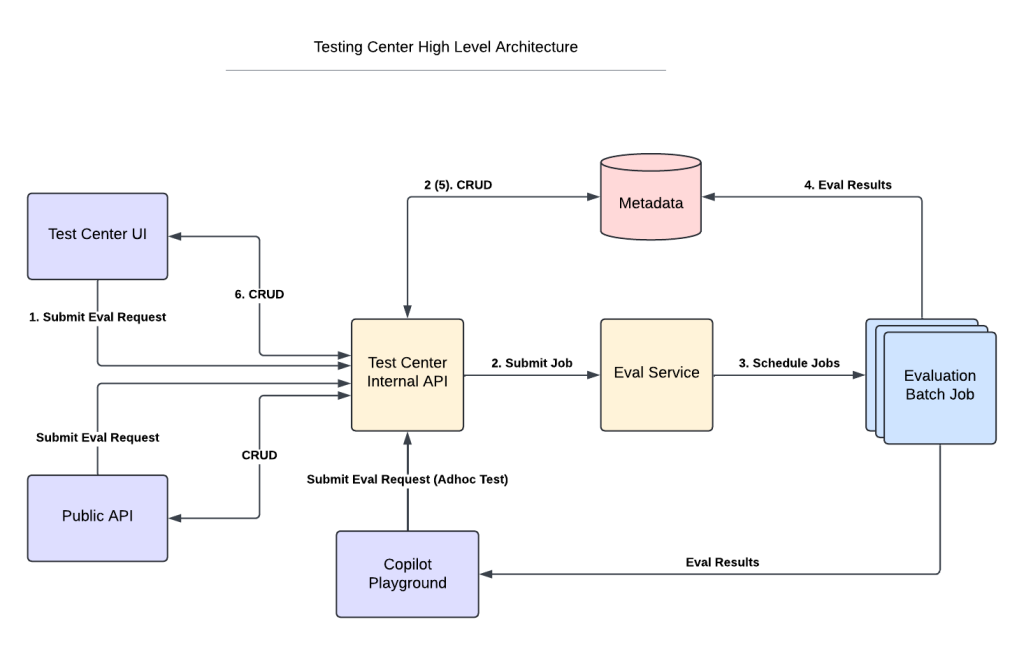
In our “Engineering Energizers” Q&A series, we feature Muralidhar Krishnaprasad (MK), President and Chief Technical Officer, Einstein 1 Platform, Data Cloud, MuleSoft, and Tableau at Salesforce. MK has been a key figure at Salesforce for six years, significantly advancing Data Cloud into the company’s fastest-growing organic innovation. Under his leadership, Data Cloud has achieved substantial enhancements in storage, computing, querying, cost efficiency, and scalability, introducing features like zero copy and data mesh architectures.
These innovations form the foundation for Salesforce’s next-generation platform architecture for AI, analytics, and automation. As the engineering leader for Einstein 1, Data Cloud, MuleSoft, and Tableau, MK has effectively integrated these technologies to create a unified platform designed for our AI-driven future.
Discover how MK’s team enables natural access to data and insights for generative AI, achieves seamless data integration across various platforms in federated data systems, and delivers immediate, actionable intelligence for real-time analytics.
What is your team’s mission?
We are developing the Einstein 1 Platform — an integrated system that consolidates data, AI, automation, and analytics into a cohesive system, transforming how businesses interact with their data. Through Data Cloud, we provide a comprehensive view of customer interactions, which helps businesses derive actionable insights for tailored marketing strategies and improved customer engagement. The integration of AI predicts customer behaviors and automates responses, streamlining user experiences.
We are expanding this integrated approach to encompass all clouds by developing robust connectors and APIs that enable seamless data flow across different systems. This allows businesses to transcend functional boundaries and maximize their data utility. Our Zero Copy Partner Network further supports this by letting data stay in its original location while being securely accessible for AI, analytics, and automation, enhancing the platform’s efficiency and usability.
We make these advanced capabilities accessible to all users, regardless of their technical background, through user-friendly interfaces and tools. Features like natural language processing allow users to easily interact with data and extract insights, democratizing the benefits of AI and automation.
How has your team utilized generative AI to improve user interactions?
Our use of generative AI has significantly transformed user interactions. A key challenge was ensuring that data and insights are accessible in a natural and intuitive way. To address this, we created a general-purpose AI layer that integrates with data and APIs, facilitating advanced reasoning capabilities. This AI layer fuels our copilots, enabling them to conduct natural language conversations with data artifacts.
For instance, business users can now query their data simply by asking questions such as, “What do you project the growth of my sales to be next quarter?” This functionality is particularly valuable for accessing and utilizing data trapped in legacy systems that lack APIs. Our approach, which includes technologies like MuleSoft, establishes an API layer that connects with the copilot, allowing data from these older systems to be extracted, visualized, and used effectively. This integration has greatly enhanced the way users interact with and benefit from their data, making the experience more intuitive and seamless.
MK dives deeper into the future of copilots.
What challenges did your team encounter with federated data systems?
Implementing federated data systems brought significant challenges, especially in ensuring data consistency and accessibility across different platforms. A key project involved a major transition for an Indian financial services company, which had to move from a 15-year-old system to our modern stack within three months. The main challenge was to facilitate seamless data access and integration from various sources during the migration of large data volumes without causing any operational disruptions.
To address this, we adopted a federated data strategy that allowed data to remain in its original location, whether on Azure, AWS, or on-premises systems. Our Zero Copy Partner Network facilitated this by enabling virtual interaction with the data, which significantly reduced the need for data movement, decreased latency, and provided real-time access and analysis. This strategy proved successful, as it allowed the customer to rapidly scale operations and efficiently service millions of users with enhanced reliability.
How has analytics been integrated into your platform to improve decision-making?
Our team focused on embedding analytics directly within the data platform to facilitate real-time insights and actionable intelligence. A prime example of this integration is our collaboration with an advanced automotive telematics service, where we leveraged IoT signals from vehicles. The challenge lay in processing and analyzing these signals instantly to deliver meaningful insights.
By incorporating analytics into the core of the platform, we enabled features like predictive maintenance, real-time diagnostics, and personalized customer generative AI-driven conversational analytics. Visualization was key in this integration; using Tableau, we provided intuitive and detailed data views. This setup allows business users to establish KPIs, develop semantic models, and visualize data effectively, thereby enhancing decision-making and increasing operational efficiency.

How does your team utilize customer feedback to foster innovation and enhance your products?
Customer feedback is crucial for driving innovation and improving products. We collect insights through various channels, including direct customer interactions, support issues, and usage data analysis. This feedback shapes our development priorities, enabling us to address the most pressing needs of our users.
For instance, feedback on usability issues with a particular feature might lead to its redesign to enhance user experience. Conversely, positive feedback on new features validates our strategic direction and guides further enhancements. By integrating customer insights into our development process, we ensure that our products are not only relevant and user-friendly but also closely aligned with customer needs.
How do your team’s engineering practices streamline processes and enhance automation to improve code quality and speed?
To boost code quality and speed, we’ve adopted a unified Salesforce CI/CD system. This system incorporates automated gates, deployment tools on Git, and comprehensive automated tests with rollback capabilities. By standardizing these tools and processes, we achieve consistent quality and expedite deployments. We push all code to production bi-weekly, which keeps the code current and reduces the risk of significant integration problems.
This frequent release schedule integrates quality as a fundamental aspect of our development cycle. Engineers are motivated to write tests and uphold high standards as the code is continually updated, fostering a culture of ongoing enhancement and rapid feedback. This strategy ensures that quality is woven into every phase of our development, allowing us to deliver dependable and efficient software.
MK shares why engineers should join Salesforce.
What has helped promote innovation among your team?
Our tech summits have been instrumental in addressing challenges associated with cross-team collaboration and knowledge sharing. These events provide a crucial platform for engineers to showcase their innovations, best practices, and insights from different projects. By bringing together diverse teams, the summits facilitate the exchange of ideas and solutions that might otherwise remain isolated within specific groups.
This collaborative environment fosters the adoption of new technologies and methodologies across the organization. For example, an innovative automation technique developed by one team can be presented at a summit and subsequently adopted by other teams. This not only enhances operational efficiency but also cultivates a culture of innovation and continuous learning.
Learn More
- Learn Data Cloud’s secret for scaling massive data volumes and slashing processing bottlenecks in this blog.
- Stay connected — join our Talent Community!
- Check out our Technology and Product teams to learn how you can get involved.






